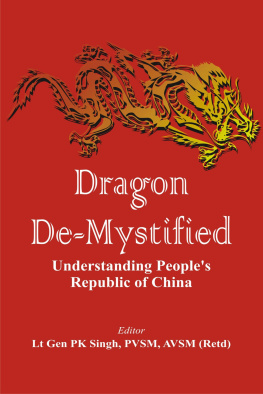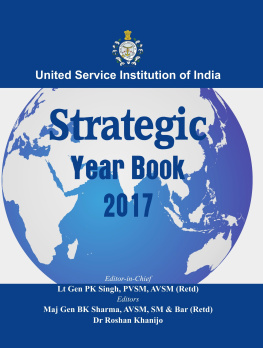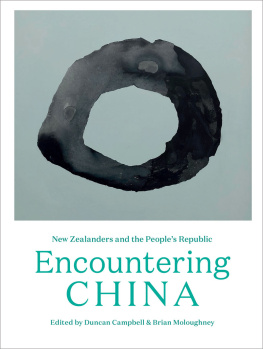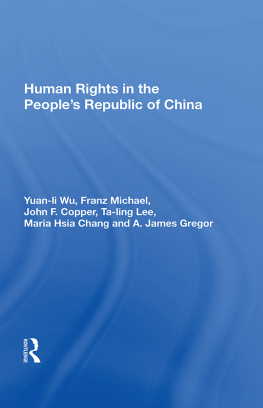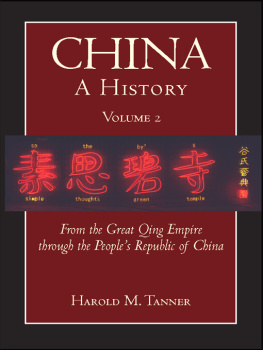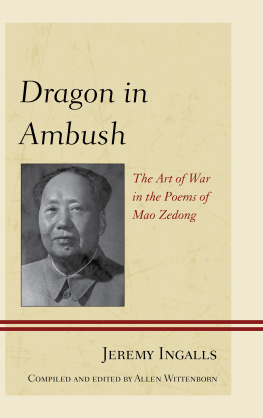Dragon De-mystified:
Understanding Peoples Republic
of China
Dragon De-mystified:
Understanding Peoples Republic
of China
Editor
Lieutenant General PK Singh, PVSM, AVSM (Retd)
United Service Institution of India
New Delhi
Vij Books India Pvt Ltd
New Delhi (India)
Published by
Vij Books India Pvt Ltd
(Publishers, Distributors & Importers)
2/19, Ansari Road
Delhi 110 002
Phones: 91-11-43596460, 91-11-47340674
Fax: 91-11-47340674
e-mail:
Copyright 2018, United Service Institution of India, New Delhi
ISBN: 978-93-86457-78-3 (Hardback)
ISBN: 978-93-86457-79-0 (ebook)
All rights reserved.
No part of this book may be reproduced, stored in a retrieval system, transmitted or utilised
in any form or by any means, electronic, mechanical, photocopying, recording or otherwise,
without the prior permission of the copyright owner. Application for such permission should
be addressed to the publisher.
Preface
The United Service Institution of India (USI) has been publishing its quarterly Journal since 1872. The Journal publishes articles on National Security, Military History and Defence related issues. To provide readers an insight into Indias evolving national interests, geopolitical developments in the strategic neighbourhood, conflict spectrum, measures for developing comprehensive national power and defence capability, the USI decided to bring out its Annual Strategic Year Book in 2016. The articles for the Journal and the Strategic Year Book are contributed by eminent research scholars who have expertise on the subject. With the fast changing Security environment, some of the issues which have undergone rapid changes are covered in subsequent issues, at times without any linkage to the previous issues on the subject.
It was therefore consciously thought that if these articles on similar themes are brought together in an edited book form, it will provide an opportunity for the readers to link the previous articles as a background on the subject and how the things shaped with times. It will also provide the readers to get to know the mindset of different authors on the same subject and provide a different line of thinking.
To commence with this series, this book covers articles on China, its Strategic issues and its effect on India. There are a total of nineteen articles selected from previous issues of USI Journals and USI Strategic Year Book published between 2015 to 2017. These articles cover Economies of China and India, China Pakistan Economic Corridor, Chinas Energy Diplomacy, Chinese Military Reforms and Evolution of Chinese Armed Forces, Chinas Military Strategy and Mindset, One Belt One Road and the Shanghai Cooperation organisation. The book also has a chapter covering the talk delivered by His Excellency Mr Luo Zhaohui, Ambassador of the Peoples Republic of China in India at the USI.
I am sanguine that this book will provide a good platform for those who are pursuing this subject for further research work.
Editor
Comparing the Economies of China and India
and its Impact on Indias Strategic and Security
Interests*
Introduction
One of the most influential research projects undertaken in the past quarter century was the study commissioned by the Paris-based Organisation for Economic Cooperation and Development (OECD) on structural changes in the world economy. British economic historian Angus Maddison led the study and gathered statistical data that shows, among other things, changes in the structure of world income and trade over the past millennium. The most striking result of the study was that in 1700 China and India accounted for nearly half of world income, with the two Asian neighbours having roughly equal shares (around 23.0 per cent each) and that their shares declined sharply to close to around 5.0 each by the middle of the 20th Century. Over two centuries of colonial rule and the fact that Asia missed out on the industrial and maritime revolutions were largely responsible for this. From 1950, both China and India have improved their shares of world income and even as recently as 1980 the two economies were more or less around the same level of development. It is now well known that in the post-Mao Dengist era, during the 1980s and 1990s, the Chinese economy took off and rapidly marched ahead of India. There was a further acceleration of Chinas growth and its share of world trade after the year 2000.
Consequently, by 2016 the Chinese economy was over four times the size of the Indian economy (please refer Table 1 below). Indias nominal gross domestic product, in terms of US Dollars, was USD 2.5 trillion in 2016, while Chinas was USD 11.2 trillion. This gap is expected to persist over the short to medium term. Chinas recent economic slowdown (see graph of China real GDP growth below) and Indias improved economic performance may help reduce the gap provided these extant trends persist.
However, in the foreseeable future, next five years, India has to live with the reality of this wide national income differential. Clearly, one consequence of the income gap would be a potential power gap, with China having the economic capacity to sustain larger defence budgets.
Table 1 : China India Size of the Economy & Per Capita Income, 2016-2020
Chinas Economic Slowdown
Chinas economic growth rate has slowed since 2012. A report on the economy presented to the National Peoples Congress states that the target rate of growth set by the countrys economic policy makers for the period 2016-2020 is 6.5 per cent. This is way below the double digit levels that China recorded over the past quarter century. Several China-watchers, however believe that the 6.5 per cent target is perhaps an ambitious one because the real rate of growth recorded last year and this could be closer to 4.0 to 5.0 per cent. Whatever the numbers, the fact is that the Chinese economy is slowing down. One reason for this is the slowdown of the world economy. China has been increasingly dependent on the world economy for sustaining its income growth and so the global economic slowdown after 2008 has hurt China more than a country like India that has been less dependent on the global economy for its own economic growth.
In response to this slowdown macro-economic authorities in China have sought to rebalance the economy by shifting the earlier emphasis on investment-led growth to consumption-led growth. However, this has not been an easy switch to engineer. Chinese consumers continue to be frugal consumers, opting to save over 40 per cent of their income. The slow growth of domestic consumption along with the rapid decline in export demand and investment demand remains a major challenge for China.
One consequence of the slowdown in exports has been that Chinas current account surplus has reduced sharply from 10 per cent of GDP in 2007 to 2 per cent of GDP in 2014. Along with the sharp fall in the current account surplus there has been a rise in the fiscal deficit. The attempt to sustain growth through some investment even when demand has been constrained has contributed to a decline in the rate of return on investment and a sharp escalation of internal debt, which has risen from 150 per cent of GDP in 2010 to 250 per cent by 2016.






